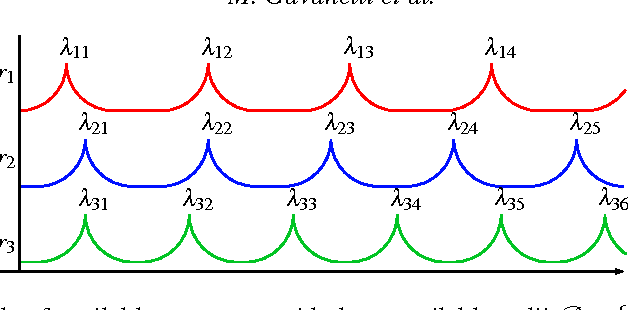Maddalena Nonato
Logic-Based Benders Decomposition in Answer Set Programming for Chronic Outpatients Scheduling
May 19, 2023Abstract:In Answer Set Programming (ASP), the user can define declaratively a problem and solve it with efficient solvers; practical applications of ASP are countless and several constraint problems have been successfully solved with ASP. On the other hand, solution time usually grows in a superlinear way (often, exponential) with respect to the size of the instance, which is impractical for large instances. A widely used approach is to split the optimization problem into sub-problems that are solved in sequence, some committing to the values assigned by others, and reconstructing a valid assignment for the whole problem by juxtaposing the solutions of the single sub-problems. On the one hand this approach is much faster, due to the superlinear behavior; on the other hand, it does not provide any guarantee of optimality: committing to the assignment of one sub-problem can rule out the optimal solution from the search space. In other research areas, Logic-Based Benders Decomposition (LBBD) proved effective; in LBBD, the problem is decomposed into a Master Problem (MP) and one or several Sub-Problems (SP). The solution of the MP is passed to the SPs, that can possibly fail. In case of failure, a no-good is returned to the MP, that is solved again with the addition of the new constraint. The solution process is iterated until a valid solution is obtained for all the sub-problems or the MP is proven infeasible. The obtained solution is provably optimal under very mild conditions. In this paper, we apply for the first time LBBD to ASP, exploiting an application in health care as case study. Experimental results show the effectiveness of the approach. We believe that the availability of LBBD can further increase the practical applicability of ASP technologies.
Logic Programming approaches for routing fault-free and maximally-parallel Wavelength Routed Optical Networks on Chip (Application paper)
Jul 18, 2017



Abstract:One promising trend in digital system integration consists of boosting on-chip communication performance by means of silicon photonics, thus materializing the so-called Optical Networks-on-Chip (ONoCs). Among them, wavelength routing can be used to route a signal to destination by univocally associating a routing path to the wavelength of the optical carrier. Such wavelengths should be chosen so to minimize interferences among optical channels and to avoid routing faults. As a result, physical parameter selection of such networks requires the solution of complex constrained optimization problems. In previous work, published in the proceedings of the International Conference on Computer-Aided Design, we proposed and solved the problem of computing the maximum parallelism obtainable in the communication between any two endpoints while avoiding misrouting of optical signals. The underlying technology, only quickly mentioned in that paper, is Answer Set Programming (ASP). In this work, we detail the ASP approach we used to solve such problem. Another important design issue is to select the wavelengths of optical carriers such that they are spread across the available spectrum, in order to reduce the likelihood that, due to imperfections in the manufacturing process, unintended routing faults arise. We show how to address such problem in Constraint Logic Programming on Finite Domains (CLP(FD)). This paper is under consideration for possible publication on Theory and Practice of Logic Programming.
 Add to Chrome
Add to Chrome Add to Firefox
Add to Firefox Add to Edge
Add to Edge